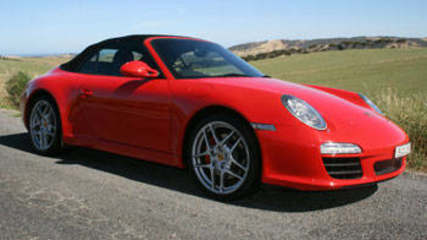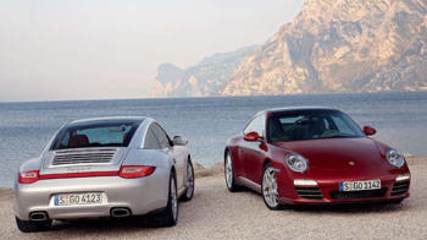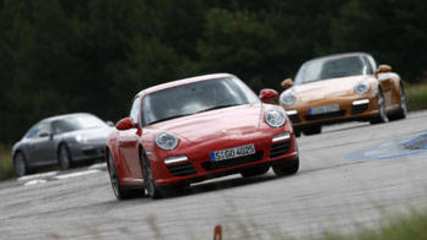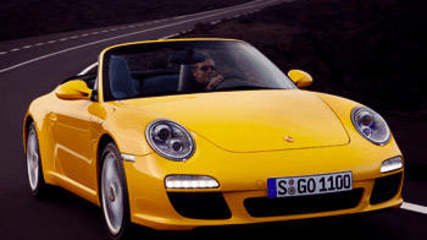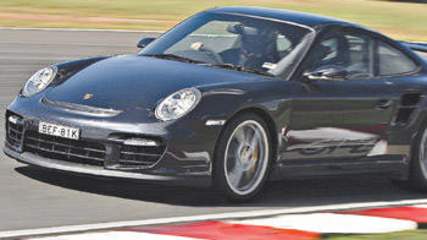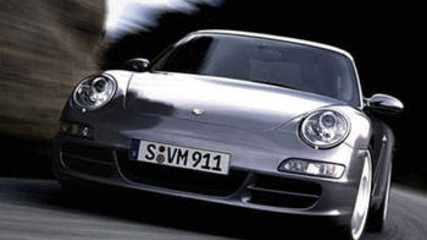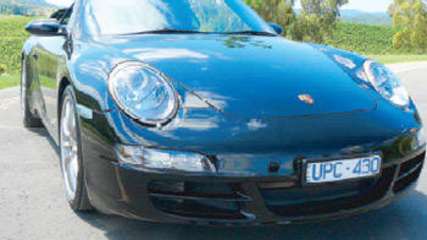Porsche 911 Carrera S manual 2008 review
By CarsGuide team · 29 Jan 2008
Take “collision”. It used to be a car couldn't collide with a tree — it hit it — because “collide” means an impact between two moving objects — unless the tree was falling at the time, of course. Nowadays “collide” is widely used for any impact.Then there's “unique”. My dictionary says it means “only one of”; now it's widely used to mean “unusual”.Which brings us to “icon”.No, it doesn't mean a superstar or the best thing out, but a painting of a sacred person. So unless the Pope sings very well, you cannot have a pop icon, if you get my drift.So while we may all think of cars like Porsche's stunning 911 Carrera as a motoring icon, it can't be. Supercar, maybe; awesome, definitely; expensive, well, that's a given. Inspirational and desirable are probably the best descriptions.Mind you, the desirability factor was wearing a bit thin as this week's road tester, a black 911 Carrera S cabriolet, was forced to crawl to a snail's pace in peak-hour city traffic. While the 911 is happy to walk this slowly, it is like a leashed dog that has spotted a rabbit.Lowering the soft-top roof sounded like a good idea at the time. We were at risk of severe sunburn at this pace and the exhaust fumes from other road users, not to mention the bugs and insects, were becoming increasingly annoying.But you can't possibly be seen in one of the world's classiest convertibles with the roof down, especially driving through some of the seriously snobby neighbourhoods of Melbourne where cars with $250,000-plus price tags are common in the driveways of plush mega-mansions. Oh no.It's not until you get out of suburbia and into rolling back country roads that the 911, with its stunning exhaust howl, shows its real mettle.Sans roof and with the rear wind-deflector in place (once you master its origami foldaway design), you can mash the right foot and start tackling the twisty stuff just as Porsche intended. At last, the 911 was in its element.Yep, I'll have one of these — just as soon as I win Tatts. The base price is $247,800 plus on-road costs, but Porsche had thrown in a few optional extras on the test car, like a $2000 phone kit, two grand's worth of sporty alloy wheels, another two for the electronic park assist and a multi-function steering wheel, and even Porsche crests ($490) on the headrests, just in case you had forgotten what you were driving. That lifted the total price to just under $256,000. Say it quickly enough and it doesn't hurt.Now I suppose it is easy to be a little tongue-in-cheek about a car the majority can't afford. But you cannot deny the degree of engineering precision and those sometimes old-fashioned seat-of-the-pants driving dynamics that the 911 represents. Few cars on the road today deliver it as Porsche does. That's why it's iconic — sorry, masterful.The S version is not the most powerful, or the dearest, in the 911 open-top line-up. That's reserved for the potent Turbo (a mere $357,500) which can do zero to 100km/h in a flat four seconds, thanks to its twin turbos punching out 353kW.My humble (but still charismatic) naturally aspirated flat six 3.8-litre had to make do with just 261kW and 4.9 seconds for the sprint. Oh, I can live with that extra point nine of a second and the fact the S is $109,700 cheaper to buy.Performance, as expected, is stunning, but I'm not going to discuss top speeds. Yes, it will easily exceed the highway limit without even breathing hard.And the performance is all quite controlled, even well mannered. If you wind on the revs and dump the clutch, you don't get a lot of smoke-producing wheel spin as the car fights for traction. The 911 is clever enough — it has enough computer aids — to override your right foot. It simply squats, squirms and then provides the kick in the pants of acceleration that only Porsche can develop.The car's dynamics are sweet. The chassis is more rigid than earlier versions so there's no scuttle shake, as found in some open-tops. The engine sits over the rear axle, which means the car be a bit tail-happy, but that's quickly tamed by the stability control systems.So is the drop-dead gorgeous 911 with its 19-inch wheels an easy car to live with? No.On the plus side, the car has a well-sorted but firm active suspension, eye-popping brakes and an impressive array of safety features including six airbags plus a rollover bar. There's loads of leather, the audio is sublime, the seats are snugly comfortable and even the once-oh-so-heavy clutch, the bugbear of previous models, has been tamed. You can even raise and lower the 42kg roof at speeds up to 50km/h, which is quite a party trick, but it takes a slow 20 seconds.On the downside, the back seat is ridiculously tiny, there's a lack of storage and the Carrera's wide hips reduce rearwards vision.But you don't buy the 911 for its practicality, do you?


